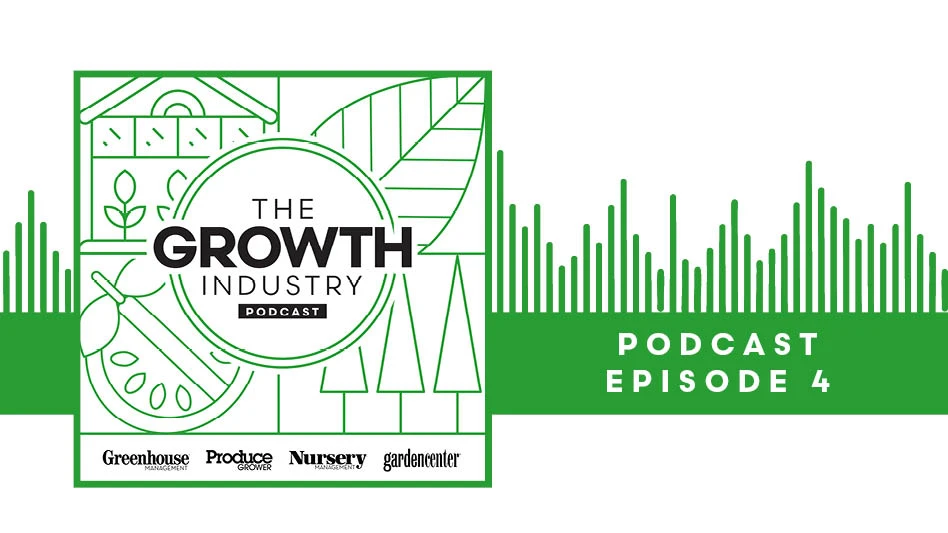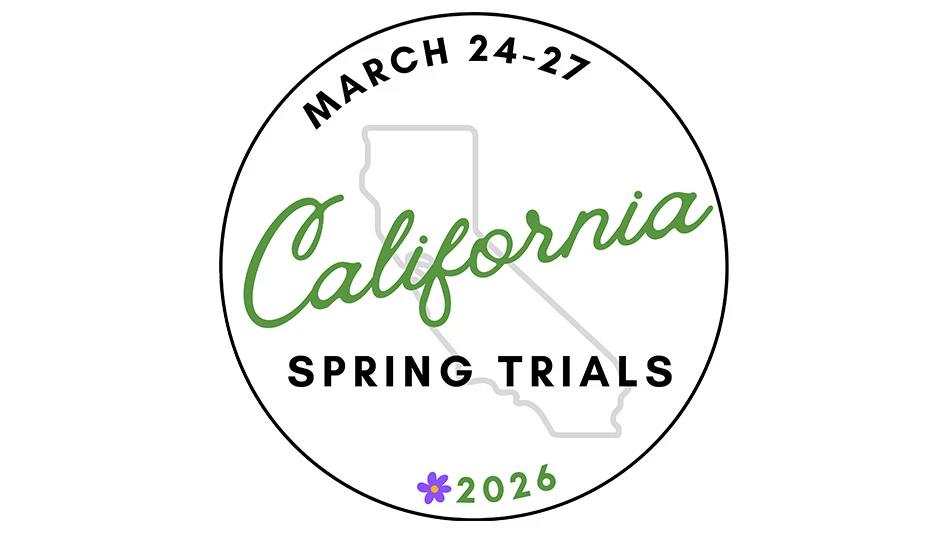
Dr. Heqiang "Alfred" Huo (center) with lab manager Matthew Creech (left) and Wisnu Handoyo Ardi (right), a Ph.D. student in Huo’s breeding program.
Photos courtesy of Heqiang “Alfred” Huo
Inside the Mid-Florida Research & Education Center at the University of Florida, Heqiang “Alfred” Huo, Ph.D., combines cutting-edge biotechnology tools and conventional plant breeding techniques in his lab.
Blending a molecular biology background with a natural enthusiasm for plants, Huo’s research focuses on improving plant genetics using various approaches — from old-fashioned hybridization methods to advanced genome editing.
“Our breeding program is using integrated approaches, including but not limited to conventional breeding,” says Huo, who was recently promoted to associate professor at the University of Florida Institute of Food and Agricultural Sciences (UF/IFAS).
Since joining UF/IFAS in 2017, Huo has made huge strides in applying advanced breeding techniques into what he calls “untapped area of ornamentals.” His comprehensive approach to plant genetics is revolutionizing understudied crops while cultivating the next generation of breeders.

Big on begonias
Upon joining the faculty, Huo built the university’s begonia breeding program from the ground up. What drew him to begonias was the wide variety within the genera, which spans more than 2,050 known species and more than 10,000 hybrids, according to the American Begonia Society. “The begonia has huge genetic diversity, which is essential for breeding activity,” Huo says. “If you don’t have plant material, you can’t do anything.”
To that end, Huo began building a massive begonia collection with donations from other breeders, botanical gardens and private enthusiasts across the country. Today, his germplasm collection comprises more than 105 species and 150 unique cultivars, including wax, rex, rhizomatous and cane varieties.
With so many diverse begonia on the market already, people often ask Huo what’s left to breed. “There’s so much that we can improve,” he answers, from growth habits and plant architecture to disease resistance. “For example, the begonia is very sensitive,” he says, so breeding tolerance to stressors like heat, drought and light intensity is a top priority in his program.
Additionally, he says, the color palette of begonias is “relatively limited,” with an abundance of white, pink and red flowers but fewer options in other hues. “We’re focusing on either trying to improve the color, to trying to make plants more resilient for the Florida weather,” says Huo’s lab manager, Matthew Creech, a biological scientist who has worked at the research center since 2006.

Multiple methods
To manipulate these traits in begonia and other ornamental bedding plants, Huo and his team of 15 use a combination of conventional and cutting-edge breeding techniques. In addition to traditional cross-hybridization, the lab also employs biotechnology tools like mutagenesis and gene editing to modify flower colors, plant architecture and stress resistance levels.
“For the begonia, we’re trying to introduce a purple color, but naturally, we’re limited because begonia genetically don’t have a germplasm for purple color. So, we try to do it with a biotechnology approach by utilizing a gene from the snapdragon, which is already used by some scientists for purple tomatoes,” says Wisnu Handoyo Ardi, a Ph.D. student in Huo’s breeding program who is already well-known in the begonia world for previous research in his native Indonesia. “Within the near future, we’ll have purple varieties.”
Creech has likewise been experimenting with pumpkin-on-a-stick (Solanum integrifolium), an ornamental variety of eggplant, by introducing sugar beet genes that turn the typically orange “pumpkin” fruits purple. Huo’s lab also studies other ornamental plants, like snapdragons, petunias and marigolds, with a Ph.D. student dedicated to each crop.
Using gene editing tools like CRISPR, Huo’s team is breeding beyond novel colors to isolate lines that are extremely resistant to Florida’s heat, drought and light intensity. “The major goal is to breed stress tolerant/resilient varieties using different tools for genetic improvement,” Huo says.

Ornamental innovation
Many of the advanced breeding technologies Huo utilizes are more common in agriculture than horticulture — but he hopes to change that.
“The biggest breakthrough achievement in our lab is the patent we filed to use genome editing to improve desirable traits in different crops, including ornamental plant species,” Huo says. “I’m so proud of this patent because it will allow us to apply genetic transformation technology to understudied plant species. Field crops like rice and corn have been intensively studied, but there’s a huge gap in the ornamental industry, and our technology will advance this application.”
This innovation is important for a couple of key reasons. First, he says, advanced biotechnology tools “can speed up the breeding process,” isolating desirable traits in fewer than two cycles, compared to five or six conventional breeding cycles. “You’ll save multiple years,” he says, “and not only years, but labor costs, land use, water and pesticides, too.”
Plus, Huo says, “As a research and education institution, our goal is to train our students with the most advanced breeding technology. Though they may not use this method immediately after they graduate, they gain these skill sets and acquire the knowledge. The students here learn a lot of textbook knowledge, but we’re also trying to create an environment where they can learn practical skills for breeding and for production.”

Explore the November 2024 Issue
Check out more from this issue and find your next story to read.
Latest from Greenhouse Management
- Grant awarded to test western U.S. wood species for use as wood fiber potting substrate
- Pennsylvania Horticultural Society announces 2025 Gold Medal Plant winners
- GIE Media Horticulture Group wins five regional 2025 Azbee Awards of Excellence
- Terra Nova Nurseries introduces rust-free and disease-resistant heucherella
- John T. Nickel, founder of Greenleaf Nursery Co., passes away at 89
- Three tours offered at 2025 Farwest Show
- Garden Media Group announces sixth annual Women in Horticulture Week
- Star Roses and Plants announces National Knock Out Rose Day






